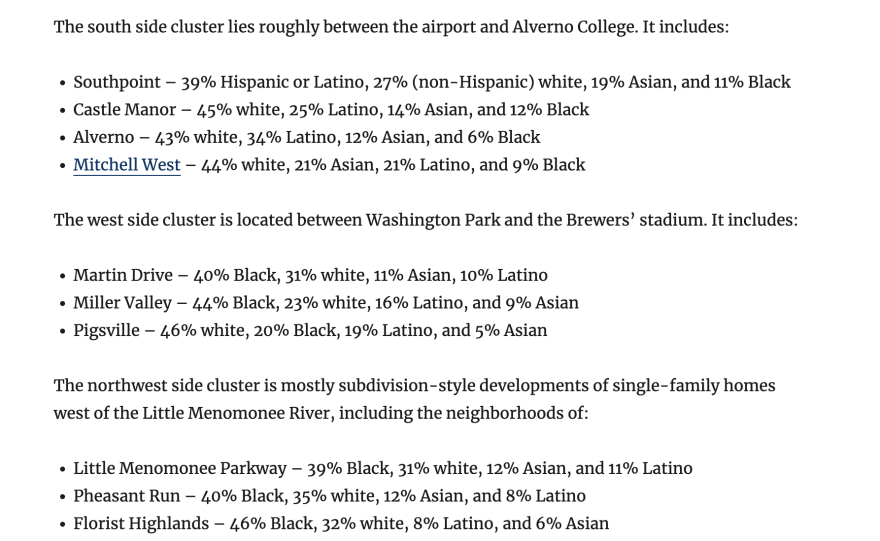Milwaukee is one of the most segregated cities in the country. According Brown University's Diversity and Disparities Project use of recent 2020 census data, the Milwaukee metro area still ranks as the second most segregated city between Black and white populations. This includes Milwaukee, Ozaukee, Washington and Waukesha counties.
But at the same time, there are a number of neighborhoods and suburbs that have seen significant changes in demographics.
John Johnson is a research fellow at Marquette University in the Lubar Center for Public Policy Research and Civic Education. He recently dissected 2020 census data to map out and identify Milwaukee’s neighborhoods that aren’t segregated. He looked into where these neighborhoods are and where deep segregation continues in a Marquette University Law School Faculty blog post. He did not present data for neighborhoods with fewer than 400 residents.
Johnson begins, "We see frustratingly little change compared to 2010. So everything you have heard in the past about segregation in the Milwaukee area is still true. There is a small amount of change, particularly in certain suburbs."
He mentions suburbs such as Brown Deer, West Milwaukee, West Allis and Wauwatosa are seeing increasing levels of racial integration, but emphasizes, "for the most part, it is still a very segregated area. Particularly on the Black-white segregation axis."
When looking at the 2020 census data, Johnson does note that Milwaukee's Latino and Asian populations have grown significantly in the past decade.
However, the census also revealed the Milwaukee's population decreased significantly. Johnson attributes this to a national trend, where people are having less children or none at all. And in Milwaukee, he mentions that white flight and the end of the residency requirement for city workers such as police, firefighters and Milwaukee Public School employees continues to play a factor as more people move to the surrounding suburbs.
"All of our evidence suggests that the majority of these people were white," he says.
Johnson noted that interestingly there is an increase of diversity in the neighborhoods that those city employees left behind, particularly on the far southwest and northwest part of the city.
In Johnson's findings, Milwaukee's most diverse neighborhoods tend to be working or lower-middle class and located in one of three clusters on the south, west, and northwest sides.

And the least diverse neighborhoods are on the deeply segregated near north side of the city, where residents are predominantly Black. Along with neighborhoods such as the Historic Third Ward, Upper East Side, Fernwood and Downer Woods, where residents are predominantly white. These neighborhoods are also the top places that tourists venture.
"Those are the richest and poorest neighborhoods in the city, the function of racism is to make people poor. So poverty is maintains hyper segregation on the near north side. And lack of access to to wealth is what keeps people who might otherwise want to live on the Upper East Side from being able to move there."
Ultimately, he emphasizes that people should learn more about Milwaukee outside of the name brand neighborhoods. "I would just encourage anyone listening to this, who's maybe surprised to learn about this to spend some time exploring parts of Milwaukee on the far south and far west and far northwest sides of the city. There's a lot of wonderful neighborhoods in Milwaukee everywhere."
You can see the diversity index in your Milwaukee neighborhood on Johnson's blog post.






